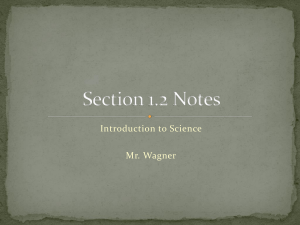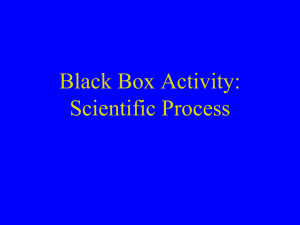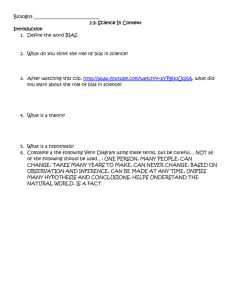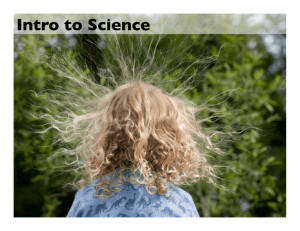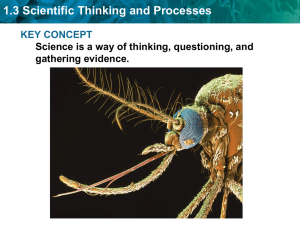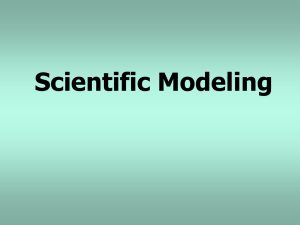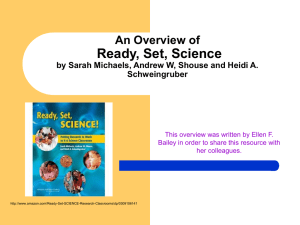Scientific Method - Ms. Trapp`s Physics
advertisement
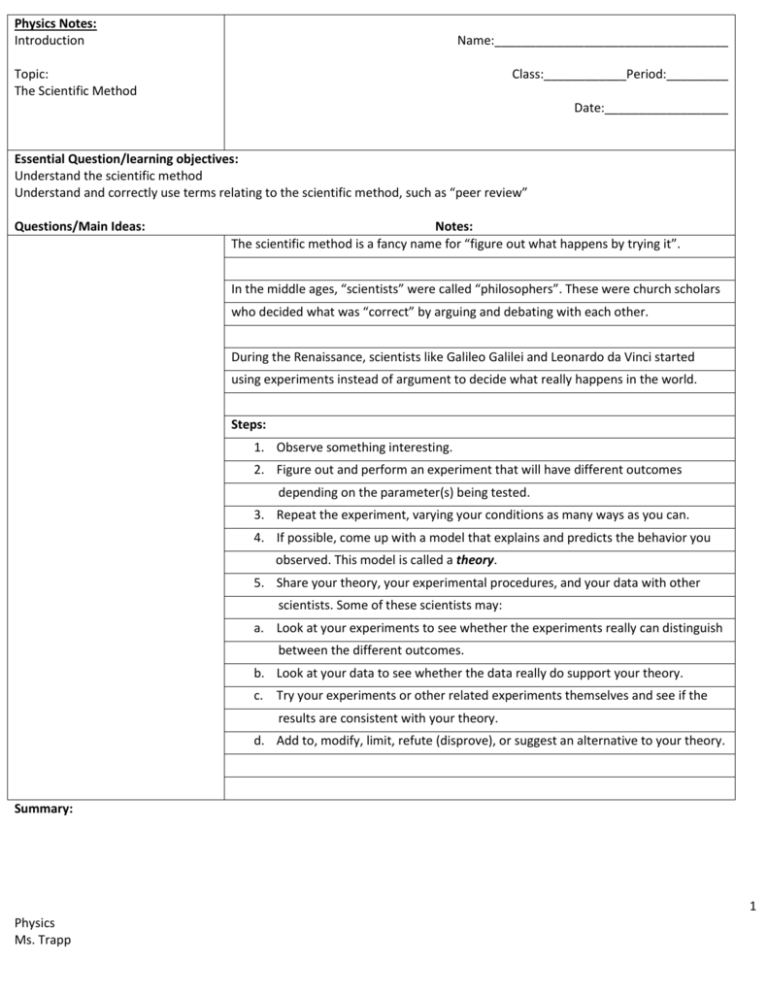
Physics Notes: Introduction Name:__________________________________ Topic: The Scientific Method Class:____________Period:_________ Date:__________________ Essential Question/learning objectives: Understand the scientific method Understand and correctly use terms relating to the scientific method, such as “peer review” Questions/Main Ideas: Notes: The scientific method is a fancy name for “figure out what happens by trying it”. In the middle ages, “scientists” were called “philosophers”. These were church scholars who decided what was “correct” by arguing and debating with each other. During the Renaissance, scientists like Galileo Galilei and Leonardo da Vinci started using experiments instead of argument to decide what really happens in the world. Steps: 1. Observe something interesting. 2. Figure out and perform an experiment that will have different outcomes depending on the parameter(s) being tested. 3. Repeat the experiment, varying your conditions as many ways as you can. 4. If possible, come up with a model that explains and predicts the behavior you observed. This model is called a theory. 5. Share your theory, your experimental procedures, and your data with other scientists. Some of these scientists may: a. Look at your experiments to see whether the experiments really can distinguish between the different outcomes. b. Look at your data to see whether the data really do support your theory. c. Try your experiments or other related experiments themselves and see if the results are consistent with your theory. d. Add to, modify, limit, refute (disprove), or suggest an alternative to your theory. Summary: 1 Physics Ms. Trapp This process is called “peer review”. If a significant number of scientists have reviewed your claims and agree with them, and no one has refuted your theory, your theory may gain acceptance within the scientific community. Note that the word “theory” in science has a different meaning from the word “theory” in everyday language. In science, a theory is a model that: Has never failed to explain a collection of related observations. Has never failed to successfully predict the outcomes of related experiments. For example, the theory of evolution has never failed to explain the process of changes in organisms because of factors that affect the survivability of the species. If a repeatable experiment contradicts a theory, and the experiment passes the peer review process, the theory is deemed to be wrong. If the theory is wrong, it must be either modified to explain the new results or discarded completely. Notice also tat the word “hypothesis” does not appear anywhere in the description of the scientific method. It is possible (and sometimes useful) to have a hypothesis before performing an experiment, but an experiment is just as valid and just as useful whether or not a hypothesis was involved. Theories vs. Natural Laws A theory is a model that attempts to explain why or how something happens. A law simply describes what happens without attempting to provide an explanation. Both theories and laws can be used to predict the outcomes of related experiments. For example, the Law of Gravity states that objects attract other objects based on their mass and distance from each other. It is a law and not a theory because the Law of Gravity does not explain why masses attract each other. Summary: 2 Physics Ms. Trapp Atomic Theory states that matter is made of atoms, and that those atoms are themselves made up of smaller particles. The interactions between the particles that make up the atoms (particularly the electrons) are used to explain certain properties of the substances. This is a theory because it gives an explanation for why the substances have the properties that they do. Note that a theory cannot become a law any more than a definition can become a measurement. Summary: 3 Physics Ms. Trapp
